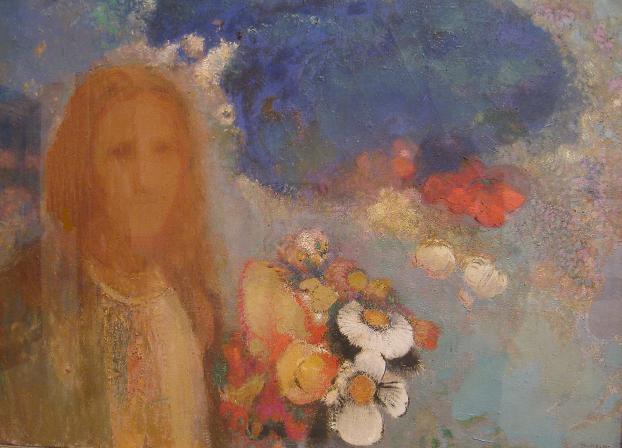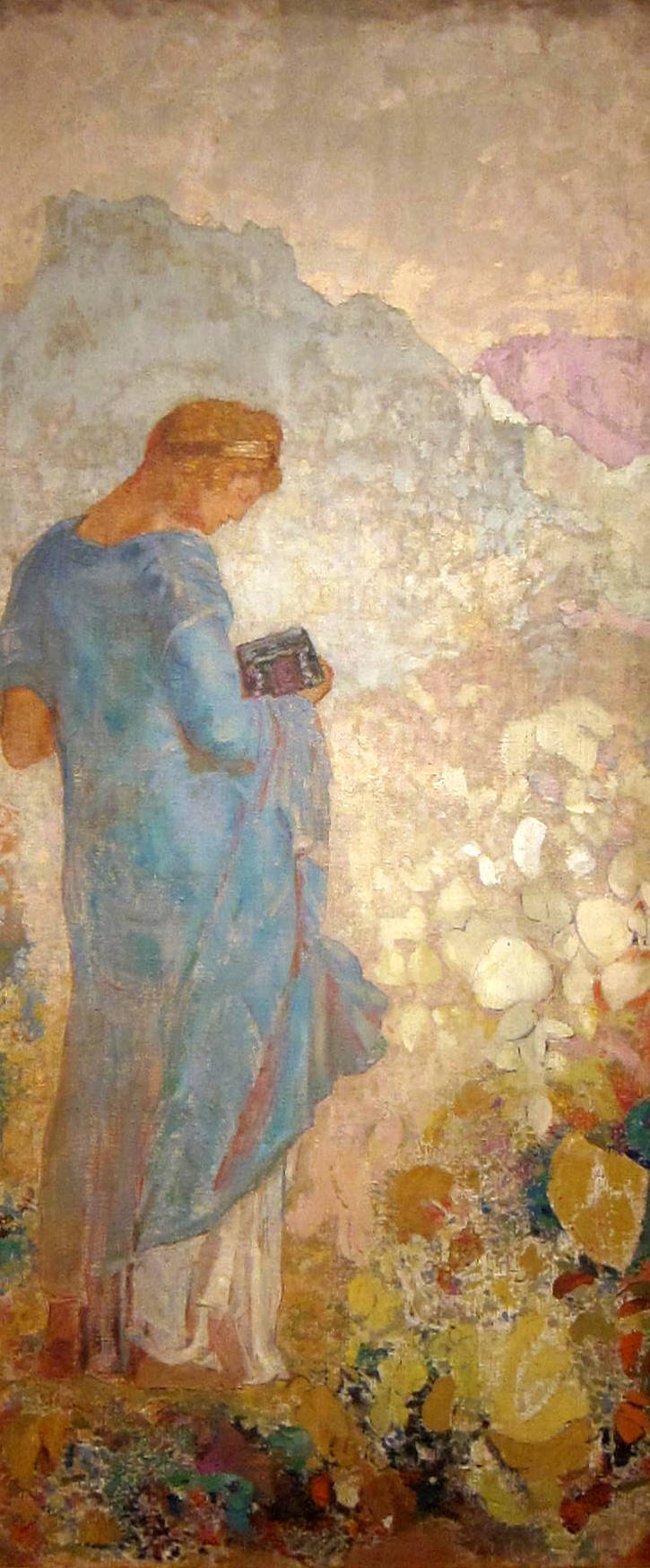
LIFE AS MYTH
![]()
JOURNAL
![]()
JOURNAL 2013
A living myth
Seven year cycles
![]()
SPRING 2013
A song of hope
The churning of the milky ocean
![]()
LIFEWORKS
![]()
ATLAS
![]()

SPRING 2013
THE BIRTH OF HOPE
(above) Spring, Odilon Redon. c. 1914. Worcester Art Museum. Worcester, MA. In Greek mythology, Hope was the daimon Elpis. Traditional depictions show her as a young girl holding flowers. (left) Pandora, Odilon Redon. 1912. National Gallery of Art, Washington, D.C.
Pandora, meaning all-gifted, was the first woman. According to the Greek myth, she is the punishment that Zeus devised for the theft of fire by Prometheus. When the gods and goddesses formed her, Pandora received various gifts: beauty, healing, charm, cunning, boldness and creativity. To this mix Zeus added mischievousness and a deep curiosity. He then presented her to the mortal ruler Epimetheus, with a beautiful golden box as her dowry. The golden box held dangerous contents, unknown to Pandora and Epimetheus.
Prometheus warned Epimetheus about Zeus's plan for revenge, about Pandora, about the dangerous golden box. It was to no avail. When Epimetheus saw Pandora he fell in love with her and married her despite the warning.
After they married, Epimetheus told Pandora to never open the golden box. Eventually she could not contain her curiosity. She opened the box and when she did, everything changed. Up to that day, humanity had lived in a paradise free from worry and affliction but when Pandora lifted the lid, the daimones of disease, despair and suffering flooded out into the world. Realizing what she had done, Pandora quickly lowered the lid but it was too late.
Some time afterward Pandora's curiosity sent her back to the golden box. One more daimon remained inside. It was Elpis, the daimon of hope, and when Pandora lifted the lid for the final time, hope came into the world to help comfort humanity through its suffering.


